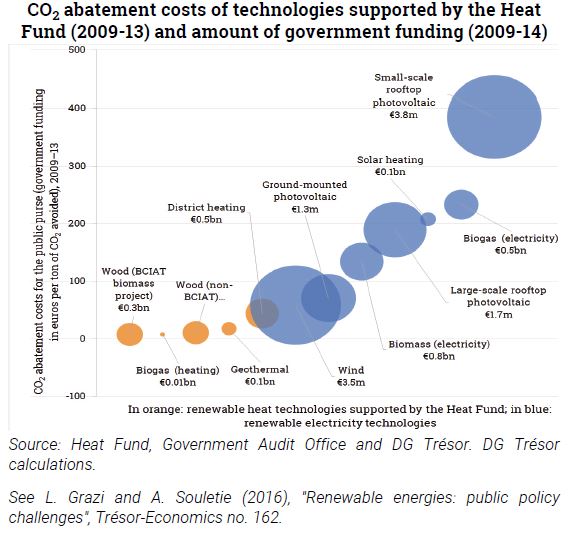Trésor-Economics No. 222 - Renewable energy sources for heating
In France, energy consumption for heating accounts for nearly half of final energy consumption. Energy for heating still largely comes from fossil fuel sources (with more than 60% of energy for heating coming from natural gas, fuel oil and coal), making this sector a crucial battleground for decarbonising the economy.
Fuelwood, mainly used to produce heat, is currently the leading renewable energy source in France, ahead of hydropower. However, France is lagging behind on its renewable heat targets: in 2016, 20.7% of heat was produced using renewable energy sources, compared to a target of 25.5%.
Renewable heat technologies are generally cost competitive with fossil fuel sources (i.e. gas and oil). Therefore, they offer a relatively low cost per ton of CO2 avoided, below that of renewable electricity sources such as wind and solar power (see the chart below).
The main driver for renewable heat is the implementation of a high carbon price. The 2018 Budget Act adjusted the trajectory for the carbon component of energy taxes upwards. This component will rise to €86.20 per ton of carbon in 2022, making renewable heat technologies much more competitive.
Nevertheless, investment barriers persist (including a lack of information and difficulties obtaining funding). This situation warrants energy performance standards for buildings, as well as continued government incentives, notably through the Heat Fund (Fonds Chaleur) and the Energy Transition Tax Credit (Crédit d'impôt pour la transition écologique, CITE), provided such incentives are targeted to the most efficient technologies.
